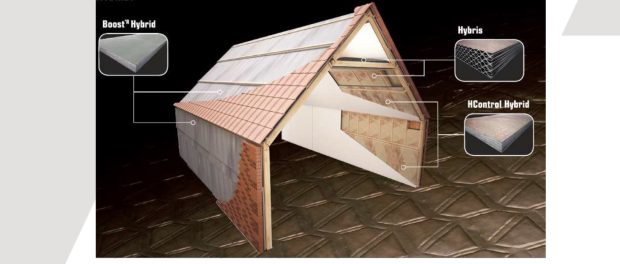Actis’ performance gap CPD celebrates a decade of thermal bridging education

A RIBA-approved CPD designed to help construction professionals combat thermal bridging is celebrating its tenth anniversary.
 Since its launch on the cusp of 2014 and 2015 Addressing the performance gap with reflective insulation, created by insulation specialist Actis, has joined the hallowed stable of RIBA-approved training programmes and been updated to reflect changes to Parts L and O in the run up to the Future Homes Standard.
Since its launch on the cusp of 2014 and 2015 Addressing the performance gap with reflective insulation, created by insulation specialist Actis, has joined the hallowed stable of RIBA-approved training programmes and been updated to reflect changes to Parts L and O in the run up to the Future Homes Standard.
The core programme now includes additional information about thermal modelling and new reflective insulation technologies – products which are particularly useful in reducing thermal transmission of elements – as well as construction details and airtightness.
The hour-long training session, available on-line or face-to-face free of charge, provides detailed advice on how to reduce thermal bridging and achieve optimal energy efficiency.
Actis technical manager Harsha Mistry explained: “Energy efficiency standards should always be based on reducing the need for energy first and in particular limiting the heat loss through thermal elements – that is through achieving excellent U-values, reducing thermal bridging and improving airtightness – the fabric first principle.”
The Actis Hybrid range of insulation and membranes and its two-in-one Eolis HC provide ideal fabric first solutions for the forthcoming Future Homes Standard.
“The flexible nature of the products means they can be bent round corners and moulded into gaps to help eliminate thermal bridging. Because they are flexible and straightforward to install, the margin for error is very small, making the risk of thermal bridging very slight,” said Harsha.
Thermal modelling trials carried out by certification body BM TRADA have shown that Actis insulated membranes have a dramatic impact on counteracting thermal bridging and act as excellent thermal blankets.
The products also address an explicitly stated directive under Part L which requires insulation to be continuous and thermal bridging to be avoided as much as possible.
The directive states: “Insulation should be reasonably continuous over the whole building envelope. The building fabric should be constructed so that there are no reasonably avoidable thermal bridges in the insulation layers caused by gaps within the various elements, at the joints between elements such as those around the window and door openings. Reduction in thermal performance can occur where the air barrier and the insulation layer are not contiguous and the cavity between them is subject to air movement.”
The CPD shows how using thermal modelled junctions – such as a set of 16 created by Actis – in conjunction with U-values in SAP calculations will help ensure projects perform thermally in real life just as planned at the design stage.
Indeed, the CPD tells its attendees that using these are far more accurate than pre-prescribed psi values, according to research carried out by certification body BM TRADA.

